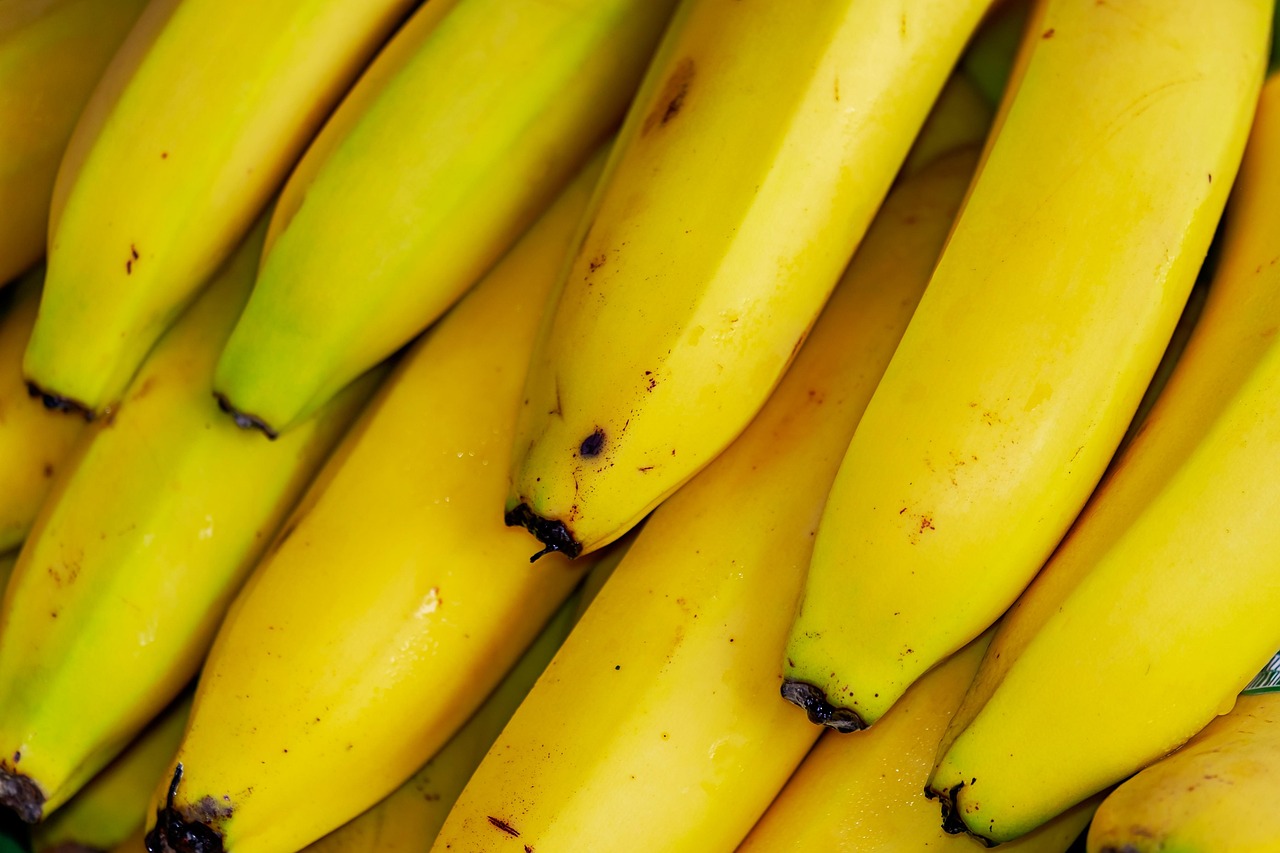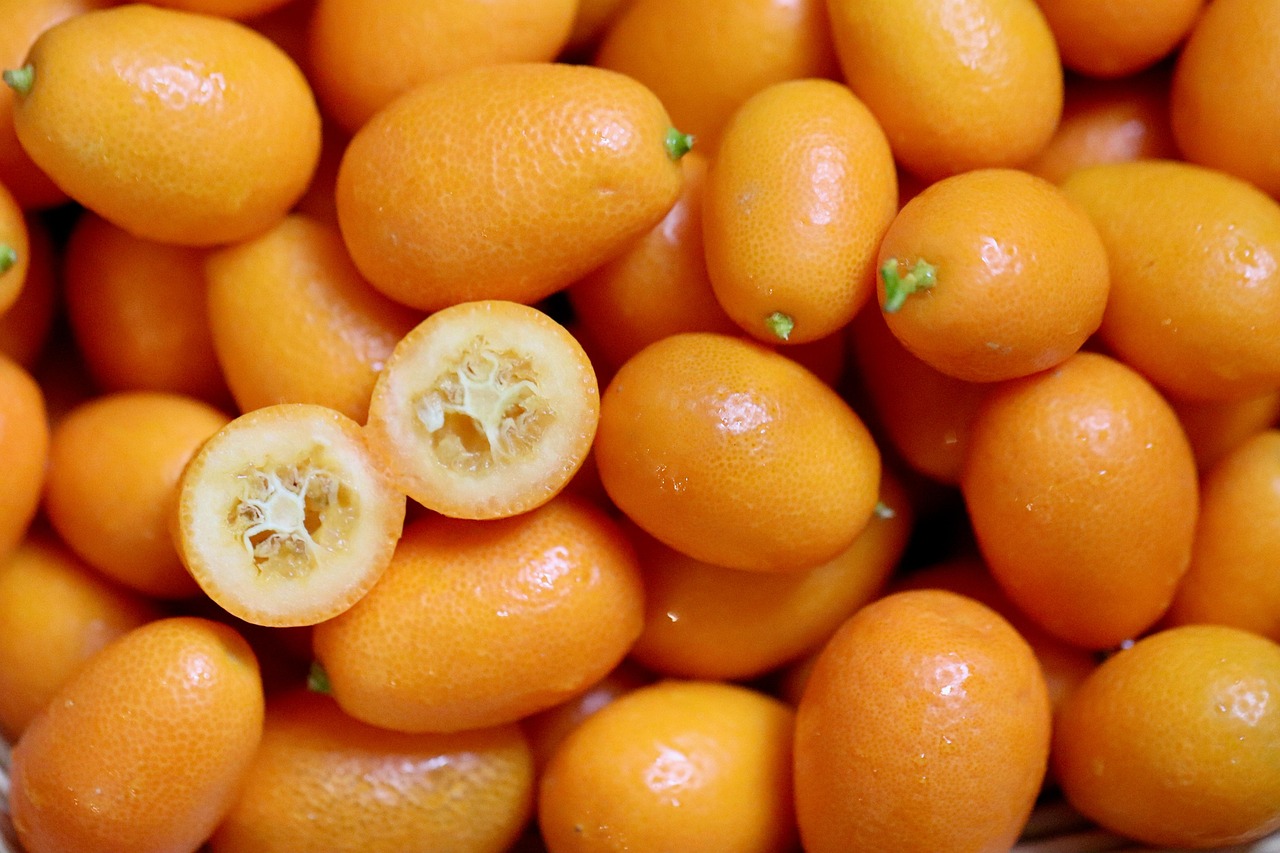Summer pruning of tropical fruit trees in warm climates is essential for promoting healthy growth and maximizing fruit production. This practice helps manage tree size, improve air circulation, and enhance sunlight exposure to the developing fruits.
Tropical fruit trees thrive in warm climates, where they can produce abundant yields. However, these trees often grow vigorously, leading to dense foliage that can hinder fruit development. Pruning during the summer months helps mitigate these issues by shaping the tree and allowing for better light penetration and airflow. This is particularly important in humid climates, where moisture can contribute to fungal diseases.

Summer pruning not only improves fruit quality but also encourages new growth. By selectively removing branches, gardeners can direct the tree’s energy toward fruit production rather than excessive leaf growth. Understanding the right techniques and timing for pruning is crucial for achieving the best results.
Benefits of Summer Pruning
There are several benefits to summer pruning tropical fruit trees. These benefits include:
- Improved Air Circulation: Pruning helps reduce overcrowding in the canopy, allowing for better airflow which decreases the risk of disease.
- Increased Sunlight Exposure: By removing excess foliage, sunlight can reach more parts of the tree, promoting healthier fruit development.
- Enhanced Fruit Quality: With proper pruning, trees can focus their energy on producing larger and more flavorful fruits.
- Better Tree Shape: Regular pruning helps maintain an ideal tree shape, making it easier to harvest fruits and manage the tree overall.
Additionally, summer pruning can help control pests. A well-maintained tree is less attractive to certain insects. The removal of unhealthy or damaged branches can also reduce hiding spots for pests.

Best Practices for Summer Pruning
To successfully prune tropical fruit trees in summer, consider the following best practices:
- Timing: The ideal time for summer pruning is just after the main fruiting season. This allows the tree to recover quickly before the next growth cycle.
- Tools: Use sharp and clean tools to make precise cuts. This minimizes damage to the tree and reduces the risk of infection.
- Selective Pruning: Focus on removing dead, damaged, or crossing branches. Avoid excessive cutting as it may stress the tree.
- Aim for Balance: Maintain a balanced structure. Ensure that no side of the tree is overly dense compared to others.
- Observe Growth Patterns: Pay attention to how the tree has grown over the previous seasons. This observation will guide your pruning decisions.
Common Tropical Fruit Trees and Their Pruning Needs
Different tropical fruit trees have unique requirements when it comes to summer pruning. Here are some common varieties and their specific needs:
| Fruit Tree | Pruning Frequency | Specific Pruning Tips |
|---|---|---|
| Mango | Every 1-2 years | Focus on thinning out crowded branches to promote airflow. |
| Papaya | Annually | Remove lower leaves and any dead stems to encourage new growth. |
| Pineapple | Every year | Trim off dead leaves and excess suckers for better fruiting. |
| Citrus Trees | Every year | Remove any suckers and dead wood to encourage a healthy canopy. |
Understanding the specific needs of each type of tropical fruit tree is critical for effective summer pruning. Each tree may respond differently to pruning, so it’s important to tailor your approach accordingly. Proper research and practice will help you gain confidence in your pruning skills.

In addition to improving tree health and fruit production, summer pruning also serves as an opportunity for gardeners to inspect their trees closely. This inspection can help identify any potential issues early on, such as pest infestations or signs of disease. Recognizing these problems promptly allows for timely intervention and helps maintain a productive garden.
The knowledge gained from summer pruning can greatly enhance your gardening experience. It fosters a deeper connection with your plants while encouraging better growth and higher yields. Embracing this practice not only benefits your tropical fruit trees but also contributes to a more sustainable gardening approach.
Tools and Techniques for Summer Pruning
Having the right tools is essential for effective summer pruning of tropical fruit trees. The tools you use can impact the quality of your cuts and the overall health of the tree. Here are some commonly used tools along with their purposes:

- Hand Pruners: Ideal for making clean cuts on small branches and stems.
- Loppers: Suitable for thicker branches that are too large for hand pruners.
- Pruning Saw: Best for removing larger limbs that require more force.
- Garden Shears: Useful for shaping and trimming foliage.
- Gloves: Protects your hands while working with sharp tools and rough branches.
In addition to tools, employing the right techniques is vital for successful pruning. Here are some important techniques to consider:
- Make Clean Cuts: Always aim for clean cuts at a 45-degree angle. This reduces the risk of disease and encourages quicker healing.
- Cut Just Above a Node: When removing branches, make your cut just above a node or bud. This encourages new growth from that point.
- Avoid Topping: Topping is the practice of cutting off the top of a tree. This can lead to weak growth and should be avoided.
- Step Back Frequently: Periodically step back to assess your work. This helps maintain balance and shape throughout the pruning process.
Signs That Your Tropical Fruit Tree Needs Pruning
Recognizing when to prune your tropical fruit trees is as important as knowing how to prune them. Here are key signs that indicate it’s time to prune:
- Overcrowded Canopy: If you notice that branches are crossing or crowding each other, it’s time to thin out the canopy.
- Dead or Diseased Branches: Look for any branches that are dead, broken, or showing signs of disease. These should be removed immediately.
- Poor Fruit Production: If your tree is not producing as much fruit as expected, it may need pruning to redirect energy toward fruiting.
- Pest Infestations: If you find pests residing in dense foliage, pruning can help reduce pest habitats.
The Role of Summer Pruning in Disease Management
Summer pruning plays a crucial role in managing diseases that commonly affect tropical fruit trees. Many diseases thrive in humid conditions, which can be exacerbated by excessive foliage. Here’s how summer pruning helps:
- Reduces Humidity: By thinning out the canopy, you allow air circulation to improve, reducing humidity levels around the tree.
- Improves Sunlight Penetration: Sunlight can help dry out wet leaves and reduce fungal growth.
- Facilitates Inspection: A well-pruned tree allows for easier observation, making it simpler to spot early signs of disease or infestation.
The most common diseases affecting tropical fruit trees include:
| Disease | Description | Prevention Measures |
|---|---|---|
| Powdery Mildew | A fungal disease that appears as white powdery spots on leaves. | Avoid overcrowding and ensure good air circulation through pruning. |
| Canker | A fungal infection that causes sunken lesions on branches and trunks. | Prune out infected areas immediately and disinfect tools after use. |
| Root Rot | A condition caused by overwatering or poor drainage that affects roots. | Ensure proper drainage and avoid excess moisture around the base. |
Caring for Your Tools
Caring for your pruning tools is essential to ensure they remain effective and safe to use. Proper maintenance not only prolongs the life of your tools but also helps prevent the spread of diseases. Here are some tips for maintaining your pruning tools:
- Clean After Use: Wipe down blades with a cloth after each use to remove sap and debris.
- Sterilize Tools: Use a solution of bleach or rubbing alcohol to sterilize blades before and after pruning to prevent disease transmission.
- Sharpen Regularly: Keep blades sharp for clean cuts. Dull blades can tear the bark and introduce disease.
- Store Properly: Store tools in a dry place to prevent rusting and damage.
Taking good care of your tools will enhance your pruning experience and contribute to the overall health of your tropical fruit trees. With the right tools, techniques, and knowledge in hand, summer pruning becomes an effective practice that promotes healthy growth and fruitful yields in your garden.
Seasonal Considerations for Summer Pruning
When planning for summer pruning of tropical fruit trees, it’s essential to consider seasonal factors. Weather conditions, the specific growth patterns of the trees, and the timing of fruiting can all influence when and how to prune effectively. Understanding these seasonal considerations can help maximize the benefits of your pruning efforts.
Understanding Growth Cycles
Tropical fruit trees typically have distinct growth cycles influenced by temperature, humidity, and rainfall. Here are some key points to consider:
- Active Growth Phase: Many tropical fruit trees enter a vigorous growth phase during the warm months. This is an ideal time to prune as the tree can quickly recover from cuts.
- Fruit Development: Pruning just after the main fruiting season allows the tree to focus on developing new growth rather than fruiting.
- Resting Phase: Be cautious about pruning during the tree’s dormant or resting phase, as this can lead to excessive stress and hinder future growth.
Monitoring your local climate can help determine the right time for pruning. In regions with distinct wet and dry seasons, pruning just before the dry season can be beneficial. This allows trees to recover and strengthen before potential drought conditions.
Weather Conditions
Weather can significantly impact pruning practices. Here are some considerations regarding weather:
- Avoid Pruning During Extreme Heat: High temperatures can stress trees further after pruning. Aim for cooler parts of the day or consider pruning during overcast days.
- Consider Rainfall: Heavy rainfall following pruning can lead to increased humidity, promoting fungal diseases. Prune when dry conditions are expected.
- Wind Exposure: If strong winds are forecasted, it may be wise to delay pruning as exposed trees can suffer more damage.
Advanced Summer Pruning Techniques
For experienced gardeners, advanced pruning techniques can further enhance the health and productivity of tropical fruit trees. These techniques may require additional skill and knowledge but can yield impressive results.
Crown Thinning
Crown thinning involves selectively removing branches from the canopy to improve light penetration and air circulation. This technique is particularly useful for dense trees that have a high leaf-to-fruit ratio. Here are steps to effectively perform crown thinning:
- Selective Branch Removal: Identify branches that are crossing, crowded, or growing inward. Focus on removing these branches to create a more open structure.
- Maintain Balance: Ensure that you do not remove too many branches from one side of the tree. Aim for a balanced appearance.
- Focus on Healthier Branches: Prioritize removing weaker or less productive branches while keeping the stronger ones intact.
Heading Back
This technique involves cutting back the tips of branches to encourage bushier growth and increased fruit production. Heading back is useful for managing tree height and shaping the overall structure:
- Cutting Back: Trim back leaders and long branches to a healthy bud or lateral branch. This redirects growth energy toward side shoots.
- Encouraging Bushiness: Heading back can stimulate more lateral growth, leading to a fuller canopy which may yield more fruit.
Pest and Disease Monitoring During Pruning
As you prune your tropical fruit trees, it’s essential to keep an eye out for signs of pest infestations or diseases. Early detection can prevent further damage and ensure your trees remain healthy. Here are some common pests and diseases to watch for:
| Pest/Disease | Description | Control Methods |
|---|---|---|
| Aphids | Small insects that suck sap from leaves, often causing curling or yellowing. | Introduce beneficial insects like ladybugs or spray with insecticidal soap. |
| Citrus Canker | A bacterial disease that causes lesions on leaves and stems. | Prune infected areas and apply appropriate fungicides. |
| Scale Insects | These pests appear as small bumps on leaves and stems, sucking sap from the plant. | Use horticultural oils or soaps to suffocate the insects. |
Keeping a vigilant eye on your trees during summer pruning allows for timely intervention against pests and diseases. By being proactive, you can protect your tropical fruit trees and ensure they thrive in a warm climate.
Nurturing Growth Post-Pruning
The period following summer pruning is critical for nurturing your tropical fruit trees back to health. Proper care after pruning will support new growth and enhance recovery. Here are some practices to consider:
- Watering: Ensure the tree receives adequate water after pruning, especially in dry conditions. Deep watering encourages strong root development.
- Fertilization: Consider applying a balanced fertilizer after pruning to provide essential nutrients that support new growth.
- Pest Prevention: Monitor closely for any signs of pests or diseases after pruning, as stress can make trees more vulnerable.
Nurturing your tropical fruit trees after summer pruning establishes a solid foundation for fruitful yields in the upcoming seasons. By combining effective pruning techniques with proper post-care practices, you pave the way for vibrant, healthy trees that produce delicious fruits year after year.
In addition to watering, fertilization, and pest prevention, there are other important practices that can further enhance the health and productivity of tropical fruit trees after summer pruning. By nurturing your trees holistically, you can ensure they thrive throughout the growing season.
Mulching
Applying mulch is a beneficial practice that helps retain soil moisture and suppress weeds. It also adds organic matter to the soil as it decomposes. Here are some advantages of mulching:
- Soil Temperature Regulation: Mulch helps keep the soil temperature stable, protecting roots from extreme heat.
- Moisture Retention: It reduces evaporation, ensuring that your trees have consistent access to water.
- Weed Suppression: A layer of mulch minimizes competition for nutrients and water from unwanted plants.
- Improved Soil Structure: As organic mulch breaks down, it enhances soil fertility and structure over time.
When applying mulch, be sure to keep it a few inches away from the trunk of the tree to prevent moisture buildup against the bark, which can lead to rot or disease.
Training Young Trees
If you are working with young tropical fruit trees, summer pruning can also be an excellent opportunity for training them. Proper training shapes the tree as it grows and establishes a strong framework for future pruning. Here are some techniques to consider:
- Central Leader Training: This method focuses on establishing a single main trunk that leads upward. Remove competing leaders to encourage vertical growth.
- Open Center Training: Aim for a vase-like shape by allowing multiple main branches to grow outward. This promotes better air circulation and sunlight exposure.
- Pinching: For young trees, pinching back new growth can encourage branching and a bushier appearance.
Training young trees not only improves structural integrity but also sets the stage for improved fruit production in later years.
Monitoring Soil Health
Regularly assessing soil health is vital for the long-term success of your tropical fruit trees. Healthy soil supports vigorous root systems and enhances nutrient uptake. Here are some tips for monitoring and improving soil health:
- Soil Testing: Conduct periodic soil tests to understand nutrient levels, pH, and organic matter content. This will guide your fertilization strategy.
- Add Organic Matter: Incorporate compost or well-rotted manure into the soil to enhance fertility and microbial activity.
- Avoid Compaction: Limit foot traffic around tree roots to prevent soil compaction, which can impede root growth.
Community Resources and Support
Taking care of tropical fruit trees can be a rewarding experience, but it can also present challenges. Many communities offer resources that can support your gardening endeavors:
- Local Gardening Clubs: Joining a gardening club can provide you with valuable knowledge and connect you with other experienced gardeners.
- Extension Services: Many universities offer extension services that provide advice on pest management, soil health, and best practices for local climates.
- Online Forums and Websites: There are numerous online platforms where gardeners share tips, experiences, and solutions to common problems.
Tapping into these resources can enhance your understanding of summer pruning and overall tree care.
Final Thoughts
Summer pruning for tropical fruit trees in warm climates is not just about maintaining aesthetics; it is a fundamental practice that influences tree health, productivity, and longevity. By understanding the benefits of pruning, using the right techniques, and providing proper post-care, gardeners can cultivate robust trees that yield delicious fruits year after year.
The combination of effective pruning strategies, seasonal considerations, and ongoing care creates a thriving environment for tropical fruit trees. As you implement these practices, remember that every tree is unique and may require adjustments based on its specific needs and local conditions. Embrace the journey of caring for your tropical fruit trees, and enjoy the sweet rewards of your labor.
With dedication, knowledge, and patience, your summer pruning efforts will significantly contribute to a fruitful harvest and a lush garden environment for years to come.
